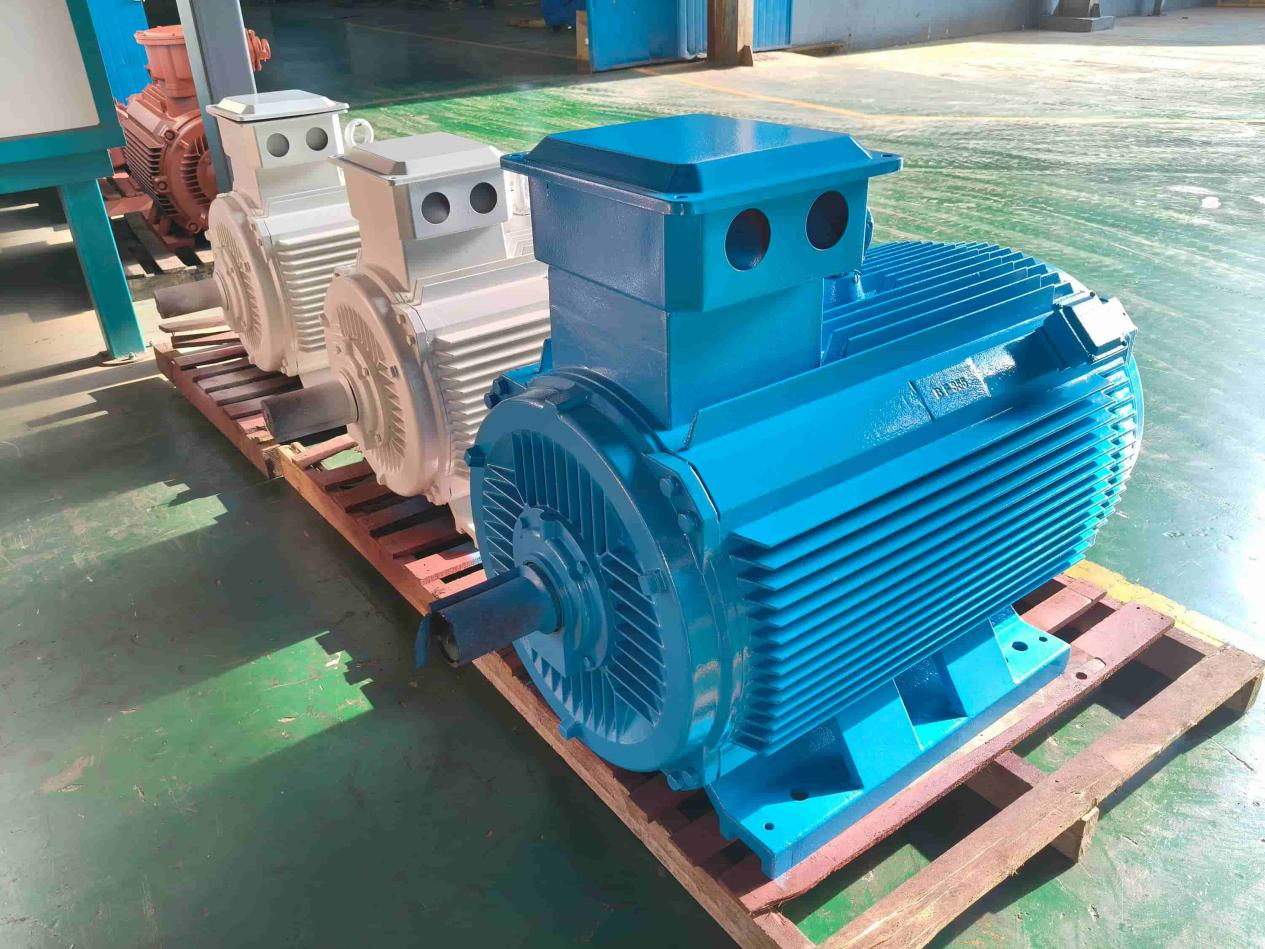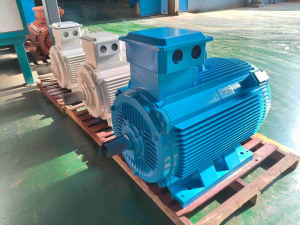Picking the Right Water Pump: A Step-by-Step Selection Guide
Choosing the right pump is a decision that impacts an entire project, from initial installation to long-term operational costs. An incorrect choice can lead to a host of problems, including energy waste, premature failure, and unreliable water pressure. Whether you’re supplying water to a high-rise building, managing an industrial process, or boosting pressure for a residential community, a methodical approach is key. We breaks down the essential steps we follow to ensure our clients get the right pump for their specific needs.
Define Your Application and Fluid Type
The first and most important step in picking the right water pump is to clearly define its purpose and the fluid it will handle.
Application: Are you boosting water pressure for a commercial building (VFD controlled booster system)? Are you transferring large volumes of clean water for a municipal utility? Or are you circulating water in a climate control system? Each of these tasks requires a different type of pump.
Fluid: While this guide focuses on water, even “clean” water has different characteristics. Is it potable water for drinking, or is it from a raw source that may contain small particulates? Is the temperature ambient or will it be hot? The fluid type will influence your choice of pump material and design. For example, a 304 stainless steel single-stage end suction pump is excellent for general clean water transfer, but a different material might be required for specific industrial fluids.
Calculate Required Flow Rate and Total Dynamic Head
These two parameters form the heart of any pump selection. They define the “duty point” your pump must meet.
Flow Rate (Q):
This is the volume of water the pump needs to move over time, typically measured in gallons per minute (GPM) or cubic meters per hour (m3/h). It is determined by the total water demand of your system—the number of fixtures, outlets, and simultaneous usage.
Total Dynamic Head (TDH or H):
This is the total resistance the pump must overcome to move the fluid. It’s not just the vertical distance the water needs to travel (static head) but also the pressure losses from friction in pipes, valves, and fittings. We use specialized software to calculate TDH accurately, taking into account all these factors.
IE4 series three-phase asynchronous motors
Single-Stage End Suction Pump
The goal is to find a pump that operates near its Best Efficiency Point (BEP) on its performance curve, where the curve intersects with your calculated duty point (Q and H). Operating a pump too far from its BEP leads to energy waste, increased vibration, and reduced pump life.
Choosing the Right Pump Type for the Job
With the duty point defined, you can select the right pump type from a wide range of options.
Single-Stage End Suction Pump: This is the most common pump type for general water transfer. It’s a reliable, cost-effective choice for low-to-medium flow and head applications, such as irrigation or HVAC circulation. Our cast iron single-stage end suction pumps are a workhorse for these tasks.
Vertical Multistage Centrifugal Pump: For applications requiring high pressure, like supplying water to a high-rise building or a reverse osmosis system, a vertical multistage pump is the ideal choice. It uses multiple impellers to build pressure gradually, making it far more efficient for high-head scenarios than a single-stage pump. Our 304 stainless steel vertical multistage centrifugal pump is a popular choice for these booster systems.
Split-Case Double Suction Pump: This pump is designed for high-flow, low-to-medium head applications, such as large-scale municipal water transfer or fire suppression. The double-suction impeller design minimizes axial thrust and allows for a higher flow rate with a smaller footprint.
Integrated Intelligent Pumping House: For a complete, ready-to-use system, an integrated intelligent pumping house is the modern solution. It combines multiple pumps, a control system, and a VFD into a prefabricated, self-contained unit.
Prioritizing Energy Efficiency and Total Cost of Ownership
The initial purchase price of a pump is only a small part of its total cost of ownership (TCO). Energy consumption and maintenance costs often far exceed the upfront investment over the pump’s lifetime. We always recommend evaluating a pump’s efficiency as a key selection criterion.
Motor Efficiency: We prefer to use high-efficiency motors, such as our IE4 series three-phase asynchronous motors. While they may have a slightly higher upfront cost, their improved efficiency leads to significant long-term energy savings.
Variable Frequency Drive (VFD): For any system with varying demand, such as a frequency-controlled constant pressure water supply for a building, a VFD is indispensable. A VFD adjusts the motor speed to match the real-time demand, ensuring constant pressure while drastically reducing energy consumption. A fixed-speed pump running at full power all the time is a major source of energy waste. Our variable-frequency speed regulating motors are specifically designed to work with VFDs for optimal performance and energy savings.
Considering Reliability and Maintenance
A reliable pump is one that operates predictably with minimal downtime. Selecting a pump from a reputable manufacturer with a track record of quality is crucial. Our pumps are designed for long-term reliability with features such as robust mechanical seals, high-quality bearings, and easy-to-access components.
Regular maintenance is also key to a long pump life. We advise our clients on a proactive maintenance schedule, including checks on bearings, seals, and system vibrations. By addressing small issues before they become major problems, you can maximize uptime and avoid costly emergency repairs.
Picking the right water pump for a project is a comprehensive process that requires careful analysis and a methodical approach. By defining your needs, accurately calculating your duty point, choosing the right pump and motor for the job, and focusing on long-term efficiency and reliability, you can make a sound decision that ensures the success of your project for years to come.
Yimai Expert Insight: The Shift to Smart, Integrated Water Supply Systems
The future of water supply is not just about moving water; it’s about smart, demand-driven management. We see a clear trend toward integrated, intelligent solutions like our integrated intelligent pumping house. This is a major leap forward from the traditional, on-site constructed pump room.
The core of this innovation lies in the integration of intelligent digital control systems with high-efficiency components. These systems use a frequency-controlled constant pressure water supply strategy. Instead of pumps turning on and off to meet fluctuating demand, the VFD precisely controls the speed of the motor to maintain a constant pressure throughout the system. This ensures a stable and comfortable user experience while also providing a high level of energy efficiency.
For example, a traditional VFD controlled booster system in a high-rise may have multiple pumps cycling on and off. Our integrated system with a VFD would use a single pump running at a lower speed during off-peak hours, saving a significant amount of energy. When a tenant opens a faucet, the system intelligently increases the motor speed just enough to maintain pressure, without a sudden surge. This approach extends equipment life, reduces noise, and provides a continuous, stable water supply. This is the new standard for building water supply and is a key part of our focus on providing comprehensive, sustainable solutions.
For over two decades, Shanghai Yimai has been a trusted high-performance pumps and motors manufacturer. By choosing Yimai, you gain access to premium and customized pump solutions that reduce operational costs and enhance sustainability. Partnering with us ensures engineering excellence and long-term reliability.
FAQs
- What is the main difference between a single-stage and a vertical multistage centrifugalpump?
A single-stage pump has one impeller and is best for moving water at a moderate head, while a vertical multistage centrifugal pump has multiple impellers stacked vertically to generate high pressure. This makes multistage pumps the better choice for high-head applications like supplying water to tall buildings.
- How does a variable frequency drive (VFD) save energy in a water system?
A VFD saves energy by precisely controlling the motor speed based on the system’s demand. In a traditional system, the pump runs at a fixed speed, often at full power, and a valve or other device is used to throttle the flow, which wastes energy. A VFD allows the pump to run at a lower speed during periods of low demand, which drastically reduces energy consumption.
- What pump material should I choose for a project handling potable water?
For potable water, we recommend a 304 stainless steel or 316L stainless steel vertical multistage centrifugal pump. These materials are highly corrosion-resistant, non-toxic, and do not contaminate the water, making them the standard choice for drinking water applications.
Keywords: Primary: picking the right water pump
Long-Tail: water pump selection guide, pump for constant pressure water supply, booster water system pump, vertical multistage pump vs single-stage pump



